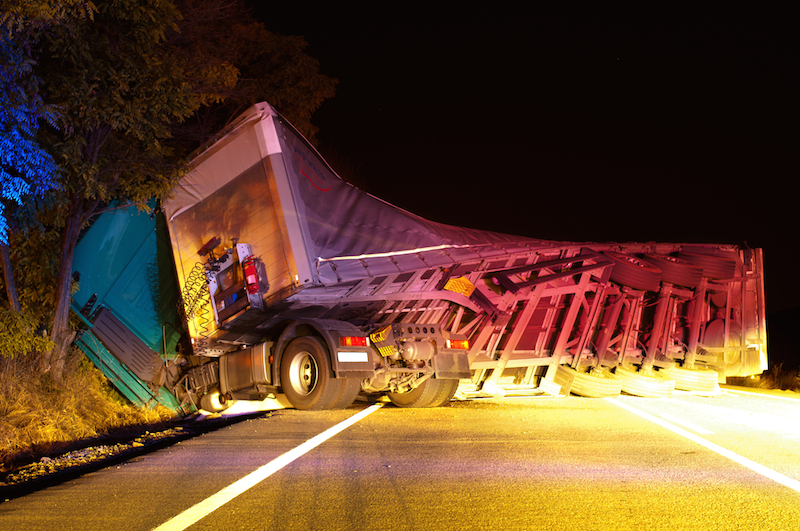The Safety Concerns with Complacency in the Workplace
 Complacency is defined as a feeling of quiet pleasure or security, often while unaware of some potential danger, defect, or the like; self‐satisfaction or smug satisfaction with an existing situation, condition, etc. In this article, we would like to identify and address complacency in safety and the workplace.
Complacency is defined as a feeling of quiet pleasure or security, often while unaware of some potential danger, defect, or the like; self‐satisfaction or smug satisfaction with an existing situation, condition, etc. In this article, we would like to identify and address complacency in safety and the workplace.
With violent crime, quite often you hear yelling and screaming before the gunshots. In the movies the music changes, but with complacency there’s usually no warning, nobody’s worried about anything, and then wham. Somebody’s dead, every day, thousands (and thousands) of times a day, all over the world. When you add it all up, complacency contributes to more unintentional deaths than anything else, especially when you combine it with rushing, frustration, or fatigue.
How do people get so complacent that they don’t look for transport trucks or they fall asleep at the wheel? Why do people get so complacent that they don’t even think about the risk any more? When was the last time you “worried” about your safety as you got behind the wheel? How do people get complacent enough that they will do something that they know contributes to making a “mind not on task” error, such as by tex‐ ting while driving? Or not use a safety device, such as a fall arrest harness that reduces the risk if they do happen to make an error with balance, traction, or grip? And finally, because it happens to all of us ‐‐ we all do get complacent ‐‐ what can we do to fight it? We have to recognize or accept that our minds will wander.
Complacency and ‘Mind Not on Task’
 Your mind is indeed your most important safety “device.” But here’s the catch: We don’t always need to be thinking about what we’re doing, from a risk perspective, in order to do many things (such as drive) without getting hurt. We can all do lots of things on auto‐pilot. So the first thing people need to do is recognize or accept that their mind will wander if they’ve done the same thing many times before. It’s going to happen. It happens to everybody. It doesn’t make you a bad person ‐‐ just a dead one, or a disabled one, or a lucky one.
Your mind is indeed your most important safety “device.” But here’s the catch: We don’t always need to be thinking about what we’re doing, from a risk perspective, in order to do many things (such as drive) without getting hurt. We can all do lots of things on auto‐pilot. So the first thing people need to do is recognize or accept that their mind will wander if they’ve done the same thing many times before. It’s going to happen. It happens to everybody. It doesn’t make you a bad person ‐‐ just a dead one, or a disabled one, or a lucky one.
Complacency causes many problems, but the biggest or worst is that it leads to “mind not on task.” Once the fear is no longer preoccupying, your mind can wander. And when you’re thinking about something other than what you’re doing at the moment, your most important asset ‐‐ your star player, your mind ‐‐ is sitting on the bench. Think about all of the times you’ve been hurt (not including sports). Can you think of even one time in your life when you’ve been hurt when you were thinking about what you were doing and the risk of what you were doing at the exact instant when you got hurt? If you’re like most people, you can’t think of even one, let alone 10. And yet we’ve all been hurt thousands of times if you count all of the cuts, burns, bruises, and scrapes we’ve had.
Case in point: The above question was posed to more than 1,200 linemen of a major electrical utility if they could think about what they were doing and the risk of what they were doing at the exact instant when they got hurt. And out of 1,200 lifetimes of those lineman ‐‐ on and off the job ‐‐ there were two examples. The average age of the group was about 45. So that’s two examples in 1,200 x 45 years.
But it’s not hopeless. There are techniques you can use to fight complacency and also to compensate for complacency leading to mind not on task and mind not on task leading to line‐of‐fire or balance, traction, or grip errors. They don’t require expensive equipment or yellow and black hash marks, but they do take a bit of personal effort. Finally, besides teaching people techniques to fight and compensate for complacency, we also have to teach them to develop a deep level of respect for complacency and what it can do so it doesn’t start creeping in to their decision‐making, as well.
One of these problems is with retaining something important to your memory — especially something that is important or critical from a safety perspective. This can be as simple as forgetting to bring a lifejacket for everyone in the boat to something more complicated, such as remembering a change to a well-established routine (driving to and from work). In some cases, the consequences are just wasted time or wasted money. In others, if there’s enough hazardous energy around, the consequences can be deadly. One of those deadly statistics is approximately 100 children/infants per year die in Canada and the United States of hyperthermia because they fell asleep in their car seats and their parents forgot they were in the vehicle.
So when you say to yourself, “I’ve got to remember this” or “I can’t forget to do that,” you need to realize that “right now” is your last clear chance to do something to aid your memory by a note in line of vision, alarm on a smart phone, etc. But, once again, complacency can get in the way. Because we don’t always forget or, worse, hardly ever forget, it’s very easy for people to get complacent about doing something else to aid their memory, especially if whatever they need to do takes a bit of effort or seems silly such as putting a Post-It note on the dashboard saying “Daughter in car seat” if you don’t normally take the child to daycare.
Another problem complacency causes is with recognizing change. We can all talk and drive at the same time. And we all know it can be a distraction. Sometimes it’s not too distracting (not too dangerous) and sometimes the conversation can be very preoccupying (very dangerous). In situations like these, it’s easy to become complacent and rationalize what we’re doing when it’s not dangerous because the risk is low. It only becomes a problem if the conversation starts to get more involved. But this can be difficult to recognize because you’re now thinking about whatever it is that’s pre- occupying your attention, not on what you’re doing (driving). So even though we all know driving when you’re really preoccupied is dangerous, complacency can lead us to do things that may easily become very dangerous without our always recognizing it.
Another fairly obvious problem complacency causes is with overconfidence. Many safety devices, procedures, or protocols are redundant if nobody makes a mistake or “nothing goes wrong.” We all know you don’t need a life jacket un- less you fall in the water. But a good swimmer might be less inclined to wear a life jacket, or an experienced ironwork- er may be less inclined to wear a fall arrest harness, especially if he were only 6-10 feet above ground.
However, people also can get complacent about using checklists and permits. They can become complacent about things such as telling someone where they’re going (a hike in the woods) and when they’re planning to come back — sort of like filing a flight plan. People even can get complacent about holding the handrail, even though we’ve all fallen going down stairs before, and some of us have even fallen going up stairs.
We all need to know more than just the critical error reduction techniques we have to learn to fight complacency and to compensate for complacency leading to mind not on task. We also have to develop a deep respect for complacency and what it can also do to our decision-making.
We all have to fight complacency every day. Focus on the tasks at hand and be certain that we have removed any ob- stacles to our completing the job safely and efficiently.
Remember, your mind is your most important safety device. Every day, thousands (and thousands) of times a day, complacency claims another victim.
